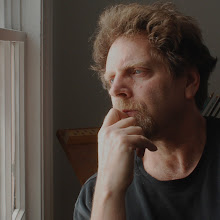

For several years I described myself as a turner. I screwed pieces of wood to a flat steel faceplate, then attached the faceplate to a lathe which revolved the wood the way a potter’s wheel spins clay or a tire spins on a car. Tricky work as scale and ambition enlarged. Not a few rough chunks of lumber tore loose from their screws and came flying straight at me like caveman cannonballs. You learned to duck.
A friend just calls it turning, spinning around and around on an imaginary point in that ecstatic Sufi dance of the dervishes. It starts with a long initiation in which pain and exhaustion become the mystical earth into which you slowly inter your willfulness and pride. The hat you wear resembles a tombstone. The body breaks down. At first, you spin around a nail, fitted in the inlet between your large toe and the next. When the skin has worn away, salt is added to augment your pain. But gradually, "the body opens up again in a completely new way." As proficiency increases, an ease and equilibrium transforms the turning into a kind of effortless swoon, lifting the spirit, as our friend describes it, upward into a union with all things. "It's a dance of yearning that connects you to God." “Turning,” our friend paused as she recounted this, then she was weeping, “was the purest emotion I have ever felt, and that emotion was love.”
This bowl is not mine, but is made by a German turner named Ernst Gamperl. In an work of dramatic syncretism, Gampril staged a performance in an old church in Zurich where he placed his wooden vessels in a circle on a slightly raised circular plinth, leaving a space in the center where two dervishes performed their dance, spinning like wood on a lathe, like a planet on its axis.
The drawing by Cy Twombly is called Suma, an allusion to this sufi dance.

No comments:
Post a Comment